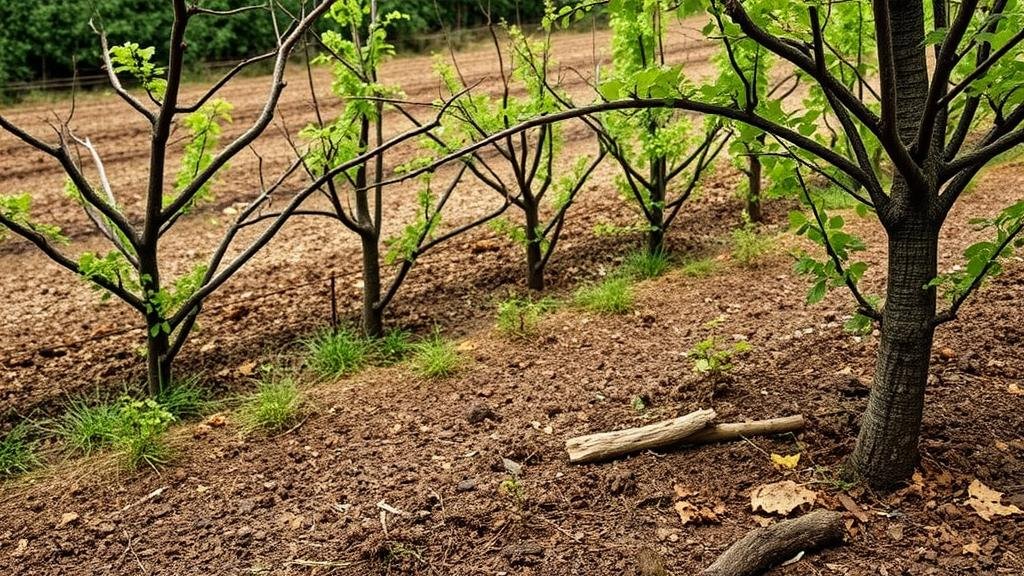Mapping Lost Pioneer Orchard Sites for Agricultural Tool Finds
Introduction
The study of agricultural history in North America reveals a rich tapestry of pioneering practices, particularly in the cultivation of orchards. This research article explores the methodology and significance of mapping lost pioneer orchard sites to uncover historical agricultural tool finds, contributing to a greater understanding of early farming techniques and tool usage in the 19th and early 20th centuries.
Historical Context of Pioneer Orchards
Pioneer orchards played a crucial role in the settlement and sustenance of communities. From the early 1800s, homesteaders planted apple, pear, and cherry trees, establishing local food supplies and contributing to the economy. For example, the Oregon Trail saw thousands of settlers moving westward, many of whom established orchards in the fertile valleys of Oregon and Washington.
- In 1844, the first significant migration along the Oregon Trail occurred, leading to the establishment of various agricultural practices.
- The Oregon Agricultural College, established in 1868, began documenting orchard development, indicating the systematic approach to agriculture in the region.
Methodological Approach
Site Identification
Mapping lost pioneer orchard sites requires a multidisciplinary approach, incorporating historical research, field surveys, and geospatial technologies. Historical maps and documents, such as the GLO (General Land Office) survey maps, provide vital clues about the locations of orchards.
Geospatial Technology
Geographic Information System (GIS) technology plays a pivotal role in identifying and mapping these sites. By overlaying historical maps with current geographical data, researchers can pinpoint probable locations of abandoned orchards. One notable case occurred in the Yakima Valley, Washington, where GIS analysis identified over 75 potential orchard sites that had been lost to urban development.
Significance of Agricultural Tool Finds
The discovery of agricultural tools in conjunction with orchard sites offers insights into the farming practices of early pioneers. Tools such as scythes, plows, and seed drills provide evidence of the agricultural techniques employed by settlers.
Examples of Notable Tool Finds
For example, a 2019 excavation at a lost orchard site in California revealed several historically significant tools dating back to the late 1800s, including a wooden apple picker and a cast-iron plowhead. These tools not only highlight the methods used in orchard management but also reflect the technological advancements of the time.
Implications for Agricultural Heritage
Mapping lost pioneer orchards does not merely serve as an exploration of the past; it also has implications for agricultural heritage conservation. Recognizing and preserving these sites can help inform current agricultural practices, emphasizing sustainability and historical awareness.
Educational and Conservation Strategies
Engaging educational programs focused on pioneer agriculture can foster a deeper appreciation for historical practices. Plus, conservation efforts aimed at protecting identified orchard sites can contribute to the preservation of local biodiversity and traditional farming methodologies.
- Partnerships with local historical societies can enhance outreach and conservation initiatives.
- Field-based workshops can educate community members on the importance of preserving agricultural heritage.
Conclusion
Mapping lost pioneer orchard sites is a vital endeavor that enriches our understanding of agricultural history. Through a combination of historical research, modern technology, and community involvement, we can uncover the tools of early agriculture and ensure the legacy of pioneer practices is acknowledged and preserved for future generations. Continued research in this area promises not only to unveil lost histories but also to provide actionable insights for contemporary agricultural practices.
To wrap up, interdisciplinary collaborations and advancements in mapping technology will play critical roles in bridging the past and present agricultural practices, promoting a sustainable future informed by historical knowledge.



